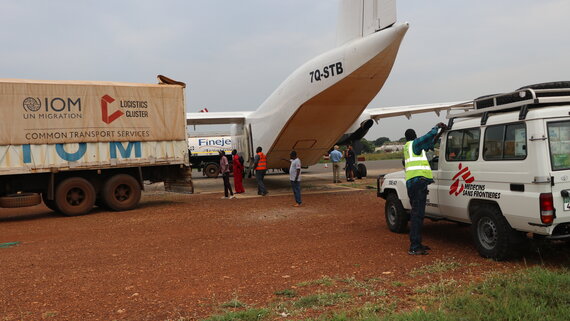
Needs
South Sudan poses complex humanitarian challenges due to its poor infrastructure, seasonal hazards, ongoing insecurity, demographic constraints, and limited aviation services. Inadequate and poor road networks create a significant logistical hurdle for affected populations seeking life-saving assistance and humanitarian organizations delivering assistance. The aviation sector remains under developed, with insufficient investment in infrastructure and capacity and a history of poor safety records among commercial carriers. Humanitarian needs are widespread across the country, and access barriers lead to delays in delivering essential relief supplies to hard-to-reach areas, resulting in increased costs. Climate variability, characterized by flooding and damage to major supply routes, limits transportation options and creates a shorter window for humanitarian agencies to pre-position vital commodities before the rainy season. Ongoing violence and insecurity further exacerbate challenges in providing life-saving services and hinder humanitarian organizations' ability to reach populations in need. Consequently, reliance on costly air transport has increased significantly. Moreover, the recent influx of returnees and refugees from Sudan following the Sudan crisis necessitates additional transportation of critical life-saving cargo for humanitarian responses, a trend expected to continue in 2024.
Response
The Logistic cluster will continue to provide reliable and readily available assets to assist affected people, including in Unity, Upper Nile, and Jonglei states as priority target locations. The four logistics projects will support approximately 300 humanitarian agencies representing all relevant clusters, with common transport and storage services, last-mile deliveries to field locations, road and dykes rehabilitation, and air transport service for humanitarian passengers, including off-schedule air transport service requests in support of emergency services, ICCG missions or charter flights.
To respond to the needs of the humanitarian community, WFP’s logistics plan is to expand and enhance the road and river network routes to effectively transport aid to those most in need, lessen isolation, and connect communities. The Logistics cluster will facilitate access to common logistics services to move humanitarian cargo to reach vulnerable people. It will allocate a fixed-wing aircraft with one weekly rotation to ICCG priority locations. The pre-positioning of cargo by road during the dry season will be maximized to use the most cost-efficient transport method and help humanitarian organizations be prepared for emergencies with readily available stocks. In addition, the United Nations Humanitarian Air Service (UNHAS) will provide a fixed weekly flight schedule to 47 destinations. IOM will continue to position 17 trucks in Bor, Bentiu, Juba, Malakal, and Wau for last-mile delivery. With the ongoing Sudan crisis, the cluster will continue to support the humanitarian community with UNHAS-scheduled passenger flights to and from Renk and airlift of relief cargo and IOM with last-mile road deliveries to affected locations in support of the response.
"Thank you for bringing all these things here to support us. This morning, I was hungry and cold, now, I have received food items, blankets, a container for water..... I am so grateful to you. My family will sleep well tonight for the first night in a long time."
- 26 year old mother with 2 small children displaced to Malakal town following violence

Juba, South Sudan
Logistics Operation
Logistics clusterMonitoring
Data for monitoring will be collected through IOM's smart sheet fleet management and internal tracking system, UNHAS Electronic Flight Management Application and Performance Management Tool, Logistics cluster Relief Item Tracking Application, and WFP logistics unit's rehabilitation tracker. User satisfaction with the services will be monitored regularly through the cluster's coordination meetings, UNHAS user group, and steering committee meetings and by conducting annual performance surveys to identify strategic and operational areas for improvement. To monitor performance, the cluster will report monthly on indicators contributing to achieving the sectoral objectives.

